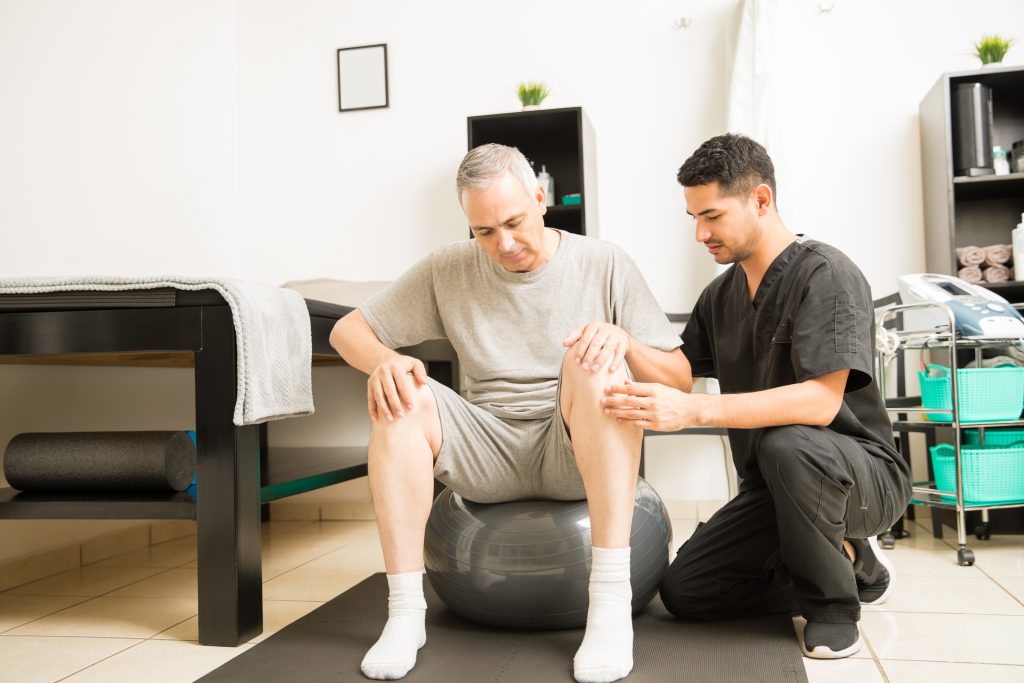Whether you’re seeking relief from the early signs of arthritis or exploring new ways to manage the condition, physical therapy is a powerful method to improve your quality of life. While there isn’t a cure for arthritis, physical therapy offers well-documented benefits for both osteoarthritis and rheumatoid arthritis, helping you stay mobile, flexible, and strong.
What is arthritis?
Arthritis is not just one type of joint degradation, but rather a condition that contributes to the breakdown of all areas of the affected joints, from soft tissues to bone. This breakdown increases friction and causes pain, swelling, and stiffness in the affected joints.
Living with arthritis can make everyday tasks challenging, and isn’t something that will simply go away with time.
Does physical therapy work for arthritis?
Yes, physical therapy can make a significant difference for arthritis sufferers! While it won’t cure arthritis, physical therapy is a highly effective way to manage symptoms, maintain joint function for longer, and reduce further deterioration.
How physical therapy helps arthritis
Physical therapy focuses on improving joint strength, mobility, and flexibility. By working on these aspects, physical therapy can help you feel better in both the short term and long into the future. Some of the key goals from treatment include:
- Pain relief: Strengthening surrounding muscles helps support damaged joints and alleviate strain.
- Improved mobility: Stretching and mobility exercises maintain joint range of motion.
- Reduced stiffness: Targeted exercises increase blood flow to affected areas, helping to ease stiffness.
- Muscle strength: Stronger muscles can help improve quality of life and physical capacity of people at any age.
- Better balance: Balance training can prevent falls and injuries associated with lower limb joint pain or instability.
Arthritis types and physical therapy
Not all arthritis is the same. The two most common types of arthritis are rheumatoid and osteoarthritis. They have different underlying causes, where rheumatoid arthritis is an autoimmune disease, and osteoarthritis seems to have a variety of risk factors but no clear direct cause.
Because of this, the treatments that will be most effective for your experience of arthritis will differ.
- For osteoarthritis (OA), physical therapy succeeds when focusing on strengthening muscles around weight-bearing joints like the knees and hips, reducing strain and improving function. It can also affect joints in the hands, which tends to benefit from a slightly different approach focused on mobility and dexterity.
- For rheumatoid arthritis (RA), therapy includes gentle exercises to reduce stiffness and inflammation. Sessions with a physical therapist can be adjusted during flare-ups to ensure comfort and safety.
What happens at physical therapy appointments for arthritis
Since no two people are alike, neither will their treatment plans for arthritis. Your Physical Therapist will utilize various techniques and exercises in your personal arthritis plan, which may include the following:
Stretching exercises
Gentle stretches increase flexibility and reduce stiffness in affected joints. For example, hamstring stretches can ease knee discomfort, while wrist stretches relieve hand tension.
Strengthening exercises
Strengthening nearby muscles helps support and protect vulnerable joints. Resistance bands, body weight exercises, and light weights are commonly used. Water aerobics and low-impact exercises may be encouraged outside of physical therapy appointments.
Range-of-motion exercises
Controlled movements focus on maintaining and improving joint flexibility. For instance, simple side-to-side head movements can help with neck arthritis.
Manual therapy
Hands-on techniques, such as joint mobilization and massage can ease stiffness and discomfort under the guidance of your Physical Therapist.
Heat and ice therapy
Education on when to use ice and/or heat can reduce a person’s reliance on medication to deal with inflammation and pain from various forms of arthritis. Heat tends to relax muscles and improves circulation, while ice reduces swelling and pain.
Long-term education and at-home care
We understand the goal from seeing a Physical Therapist for arthritis isn’t to be cured from the condition. During and by the end of your time with us, your Physical Therapist will provide you with examples of exercises, stretches, and other self-care treatments to practice at home when needed. These exercises and long-term plan can help reinforce your therapy gains and keep you progressing toward your goals.
Physical therapy for arthritis near me
If you’re ready to experience the benefits of physical therapy for arthritis, look no further than Specialists in Sports and Orthopedic Rehabilitation. Whether you’re managing early arthritis symptoms or are trying to find an effective treatment after trying other approaches, our experienced therapists are here to help.
We’re thrilled to announce a new location on College Blvd in Overland Park, demonstrating our growing commitment to improving the health and lives of folks in Kansas City, KS. Request your first appointment online today or call a clinic near you to get started.
